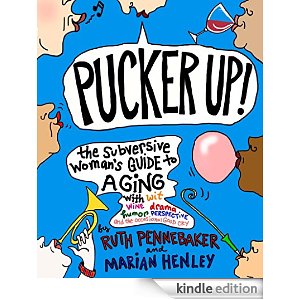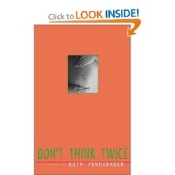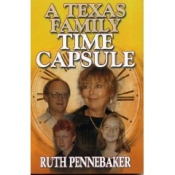If you want to know anything about old age, long marriages and the ravages of Alzheimer’s, read the news story about Sandra Day O’Connor and her husband. But maybe you don’t want to know about it till you get there.
In short: The former U.S. Supreme Court Justice moved her husband to a facility where he could be cared for — one of those wrenching, agonizing decisions families with sick members have to make. After 17 years of suffering from Alzheimer’s, John O’Connor was depressed and suicidal. Then, a few days later, he fell in love with another patient. He’s now content — and Justice O’Connor is happy that he’s finally at peace.
That’s the news hook: A devoted wife of several decades is happy that her husband is happy — even if it involves another woman. But that’s Alzheimer’s, isn’t it? It skews a familiar orbit, just a little at first. But time passes and the disease inexorably sets in, and finally you’re hurtling through space, stripped of everything that used to define you — like logic, social conventions, memory. Your family, if you’re lucky enough to have one, is along for the ride.
My sister and I have been along for the ride with our father over the past 10 years. We’ve listened to his stories, which first became surreal, then random and nonsensical. Finally, he stopped telling them.
“He told me he has 100 children,” I reported to my sister five years ago. “We’d better start looking for the other 98.”
“How’s your dog?” my sister asked him once, speaking long-distance over the phone.
“What dog?” he said. “I don’t have a dog.”
“Yes, you do,” she said. “Remember, I saw it the last time I visited you.”
“I don’t have a dog,” Daddy insisted. “I never did.”
There was a noise in the background. “What’s that?” my sister asked.
“Oh, that’s the dog,” Daddy said.
They go on and on — these stories that make us laugh, because what other choice do we have? The stories, then the attachments to others he lived with, like the one O’Connor’s husband now has.
Again and again, Daddy found comfort in relationships with women, replaying the long marriage he had with our mother. A few years ago, he and his then-girlfriend would wake up every morning and re-discover each other. It was like falling in love anew every morning. It wasn’t a bad way to start the day, as far as I could tell.
“I think he should go for it,” I told the people who worked at the center where he stayed. But the woman’s children weren’t as laissez-faire as I was. They told the center that their mother was a good, Christian woman. She wouldn’t be taking up with another man. A little later, they moved her somewhere else.
The girlfriends came and went, then finally, they were gone for good. My sister and I always knew that Daddy had taken care of our mother for years before her death; we felt he deserved any scrap of happiness he could find.
But that’s the view of the “children” — even if we’re awfully old to be calling ourselves that. I can’t imagine what it must be like for Sandra Day O’Connor or any other spouse of an Alzheimer’s patient. You know, intellectually, that your spouse is no longer who he used to be. But how painful it has to be to see him with someone else — even if (or especially if) it makes him happier and makes your own situation easier.
It’s all too reminiscent of the recent movie Away From Her, where the wife with Alzheimer’s falls in love with another patient. Her husband suffers from jealousy and guilt about his earlier failures in their marriage — then finally becomes heroic when it comes to her happiness. It was a beautiful, wrenching movie, and, at the end, I had to be surgically extracted from my theater seat, where I sat, sobbing and incoherent. But then I looked around the movie house and noticed that most of the audience was similarly incapacitated — each of us in a private world of grief. That movie, I would guess, had been far more than fiction for all of us.
Read the statistics on Alzheimer’s and they only tell you the number of sufferers. Multiply that number by two, four, ten — whatever the number of family members — and you have a better idea of how widespread the damage is.
So, with the O’Connors, here is a private story of anguish gone public. Read it and learn about the pain, compromises and sheer hell that old age and illness can bring.
But their tale has even more resonance and influence. I can’t help thinking about that, moving from the private to the very public. I can’t help thinking: Good lord. For this, Sandra Day O’Connor gave up the swing vote on the Supreme Court. Can’t she please take a mulligan this time?
(Copyright 2007 by Ruth Pennebaker)














